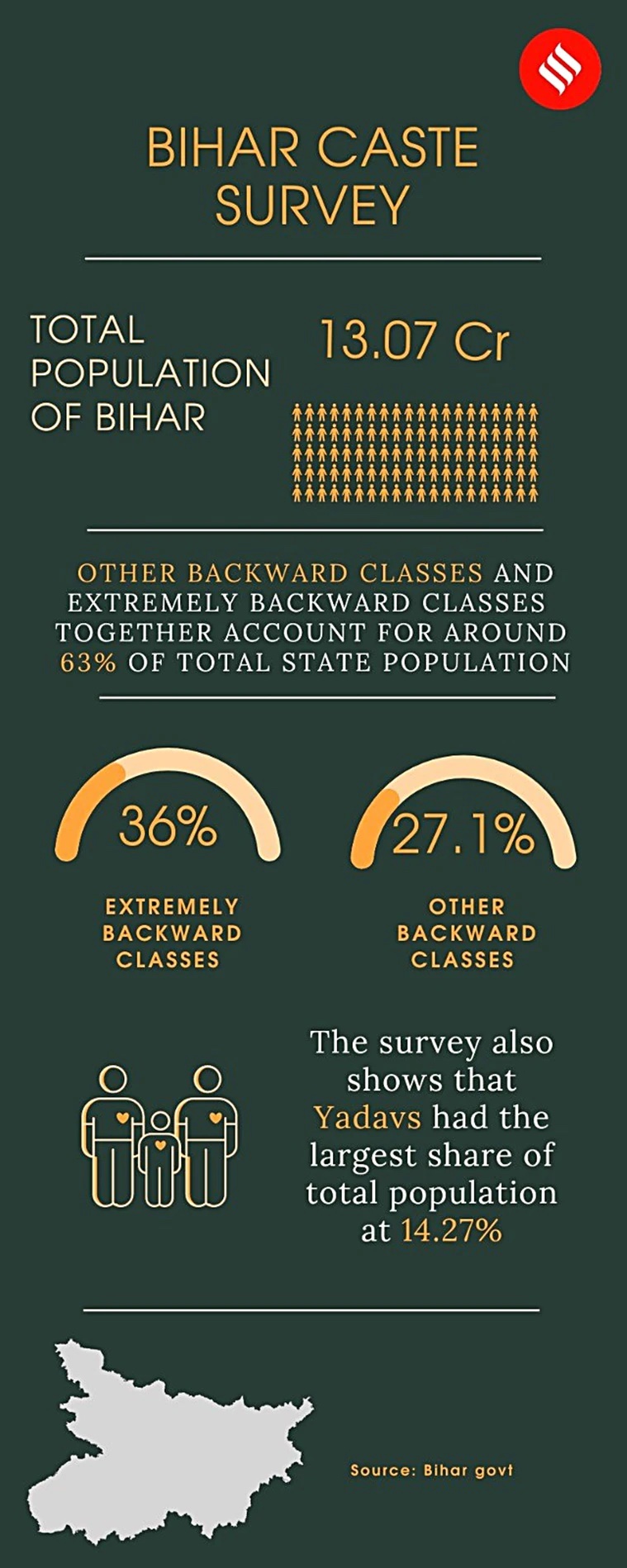Bihar castes
This is a collection of articles archived for the excellence of their content. |
The 2023 survey: Results
A
Oct 3, 2023: The Indian Express

From: Oct 3, 2023: The Indian Express
The caste survey data released by the Bihar government Monday shows that at 36.01%, EBCs or Extremely Backward Classes form the largest chunk of the state’s population, followed by OBCs at 27.12%, SCs at 19.65%, general population at 15.52% and STs at 1.68%. A look at the ticket distribution in the last Assembly elections shows the EBCs ranked high on the priority list of all parties. Nearly a quarter of the candidates in the RJD and JD(U) lists, 24% and 26% respectively, belonged to EBCs, at a time when their numbers – in the absence of a census – were estimated at about 25% of the state population.
Considered floating voters, they have always been wooed by all parties.
Of the 144 candidates the RJD fielded in 2020, as a part of the Mahagathbandhan, the Yadavs, comprised 40% (58) and Muslims 12% (17) of the candidates – the two being the bedrock of the party’s MY plank.
The caste survey data put out put Yadav numbers at 14.27% of the population.
The NDA fielded 23 Yadav candidates – 17 by the JD(U) in its share of 115 (14.78%), which was then with the NDA, and 16 by the BJP in its list of 110 (14.54%). The two thus hewed closer to the Yadav share in the population.
The BJP and JD(U) banked big on their core bases – upper caste-Baniyas and OBCs, and Luv-Kush (Kurmi-Koeri), respectively.
The BJP had 50 upper castes in its list of 110 (45%) and 17 OBC Vaishya candidates, while the JD(U) fielded 18 upper castes in its list of 115 (15.65%). The RJD had 12 upper caste nominees across 144 seats (8.33%).
The JD(U) fielded 12 Kurmi and 15 Kushwaha candidates, and the BJP 4 candidates each from the OBC groups.
The caste survey puts Bihar OBC numbers at 27.12%, and upper castes at 15.52%.
Among the EBCs, most of the parties preferred the Sahanis and Dhanuks, the major castes.
Of the JD(U)’s 26 EBC candidates, 7 were Dhanuk. The BJP fielded 5 EBCs and left 11 seats for alliance partner Mukesh Sahani’s Vikassheel Insaan Party, belonging to the Mallah community.
The RJD fielded 24 EBC nominees, 7 of them Nonias. A senior RJD leader told The Indian Express at the time: “We have applied serious thought to win over EBCs. While MY dominates our list but EBC representation is the takeaway from it.”
EBC votes are seen as floating votes because of their scattered population across the state and their lack of one overarching leader. With votes divided along caste lines in the state, EBC voters are often the deciders.